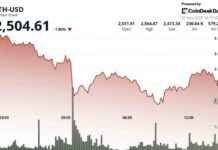In the world of cryptocurrency investing, there are three lesser-known altcoins priced under $0.05 that could potentially see significant gains in the next market surge. As mainstream options like Polkadot and Polygon lose some attention, these altcoins are gaining traction.
CYBRO is one of these altcoins, built on the Blast blockchain. It offers users the opportunity to maximize their crypto earnings through various strategies like yield farming and stacking ETH. With a presale approaching $3 million and a token price of just $0.035, early investors could see a massive return on investment.
Hedera (HBAR) is showing signs of struggle but hints at potential recovery. Trading between $0.0485 and $0.0609, the coin is below its short-term moving averages and indicators suggest it is oversold. However, if it breaks past resistance levels, there could be a potential rise of over 30% from current highs.
Stellar (XLM) is currently trading between $0.0854 and $0.1017. While facing resistance at $0.1112, it also has support at $0.0784. The stable trend indicated by moving averages could potentially lead to a rise of around 25% if XLM crosses certain levels.
Terra Classic (LUNC) is trading in a tight range between $0.0000799 and $0.0001002. With mixed signals from indicators, the coin could potentially bounce back if it breaks resistance levels. A rise of about 30% from the current price is possible if it reaches certain targets.
Shiba Inu is also in a tight range, moving between $0.00001594 and $0.00001984. While the coin has seen some gains in the last month, it is still down significantly over the past six months. Indicators suggest it’s oversold, but a potential uptrend could lead to a 30% climb.
In conclusion, while some altcoins may have less potential in the short term, CYBRO stands out as a promising project with advanced DeFi features. Offering opportunities for maximum earnings through AI-powered yield aggregation on the Blast blockchain, CYBRO provides a superior user experience with features like staking rewards and exclusive airdrops. Investors are encouraged to do their own research before taking any actions related to these cryptocurrencies.














